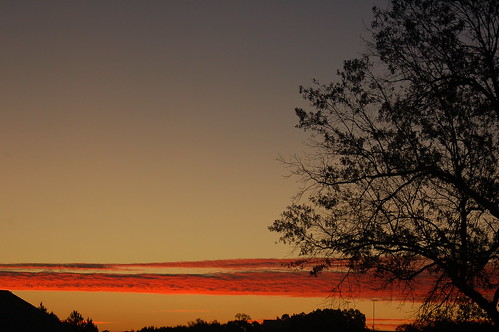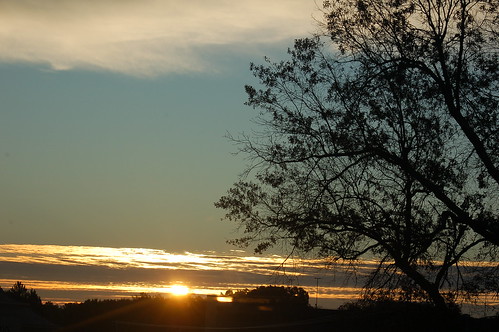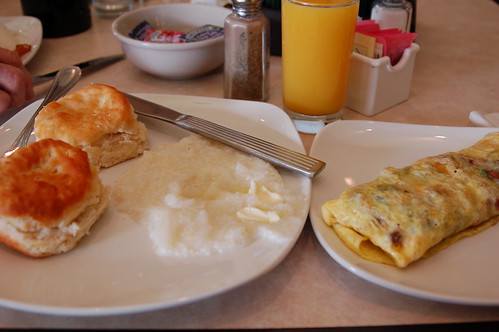
See what I mean?

My complimentary breakfast, courtesy of the Embassy Suites, orange juice, biscuits, grits and a made-to-order omlette. Yummy!

The Chapel of the Cross was one sight I truly wanted to see again. This photo gives all the reasons why, at least the exterior ones.

From the church's Web site, its history:
The Chapel of the Cross started as the vision of John Johnstone, a man who would never see it built.
Originally conceived as a house of worship for one family and its servants, it was left to Margaret Johnstone to transform her late husband's dream into reality upon his death.
This she did in 1848 - with slave labor, hired artisans, grim determination and three thousand dollars. The bricks, which would ultimately make the Chapel's walls two feet thick, were "river bottom" brick, cast on-site from area clay.
The Chapel of the Cross was consecrated in 1852. Its original parishioners were Margaret Johnstone, her younger daughter Helen, the family of her elder daughter Frances Britton and the servants of the two plantations which housed both families, Annandale and Ingleside - both long-faded in the mists of history.
One particular episode in the earliest years of the chapel was as colorful as its times, and as classically Southern Gothic as any moonlight-and-magnolia novel of romance.
The households of the Johnstone family resounded with joy when Henry Grey Vick, son of the founder of Vicksburg, proposed marriage to Helen. A lavish celebration was planned for the wedding date, which was to fall on Helen's birthday.
The affront that caused the demand for ultimate satisfaction has faded into the mists of history, leaving behind a brutal fact and the birth of a legend. Four days before the wedding, the headstrong Vick met his death on the traditional field of honor, the dueling ground.
Griefstricken beyond consolation, Helen lead a torchlit procession - on the day her wedding was to have taken place - from Annandale Plantation to the chapel in the glade where Vick was laid to rest in the family graveyard.
While Helen would later wed George Harris, who ultimately served as rector of the church on three different occasions, there remain those who say her heart never totally mended from the shock of her fiancée's sudden death.
The historians, as historians are wont to do, claim this happened, and whether it did or not, the legend of "The Bride of Annandale" will remain part of the church for generations to come.
The golden age of plantation life vanished in the volley of cannonfire that launched the War Between the States in 1861. If the ancient aphorism of war being the ultimate irony of peace-loving people is true, perhaps one of the great paradoxes in the church's history is to be found in the fact the original bell, the bell which tolled the death knell for the fallen Henry Vick, was melted down for Confederate ammunition.
The antebellum style of living wasn't the only casualty of the rages of war. The vengeful nature of Reconstruction and widespread post-war poverty took its toll on The Chapel of the Cross as well.
For the next 40 years, The Chapel of the Cross would alternate between being an active church and an abandoned, neglected house of worship until the church was declared extinct by the Diocese of Mississippi shortly after the turn of the century.
The church found new life in 1911, when Margaret Britton Parsons, a granddaughter of John and Margaret Johnstone, persuaded the Episcopal Diocese of Mississippi to reactivate the Chapel as an active house of worship. Since the Chapel's re-consecration, priests have taken charge of the operations of the church.
By the middle 1950s, The Chapel of the Cross was falling prey to the natural ravages of a century, despite its original solid construction. An accurate restoration of this historically significant house of worship was begun in 1956.
In 1979, the United States Department of the Interior awarded the chapel a $50,000 matching grant to finish the restoration the church to its original antebellum appearance.
It was in that same year the church's congregation initiated its annual fundraiser, "A Day in the Country." Traditionally held on the first Saturday of October, the event is evocative of both church "sociables" and rural country fairs from gentler, unruffled times. All proceeds are applied toward the continuing restoration and maintenance of the Chapel and its grounds and for other parish needs.
Today, many people come to The Chapel of the Cross for many different reasons.
Some come to see the building itself due to its wide recognition as one of the two finest examples of Nineteenth Century Gothic Revival church architecture in the United States.
Some come to simply touch history, examine the stone markers in the church's historic graveyard, or ponder the possibility of an appearance by a spectral bride.
And, as it should be, many gather to worship in this special, working church in a glade surrounded by both hardwoods and history.
No matter what your reason to visit may be, welcome.
- By Steven Hicks

1 comment:
As wonderful as the sunrise (and the breakfast) looks, that is one magnificent looking church. I love the design. Do you have any interior shots Lynette?
Post a Comment